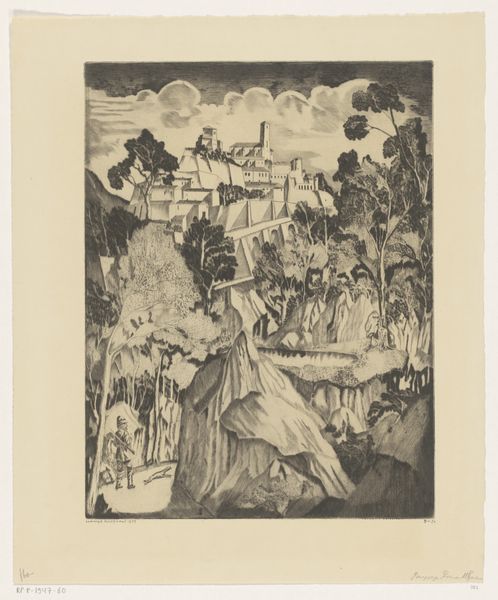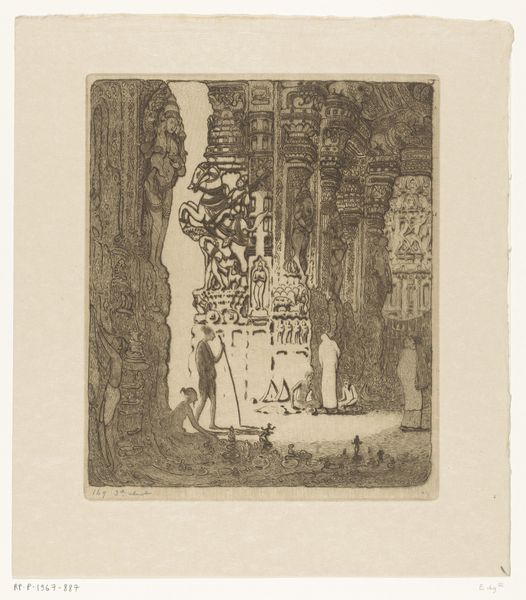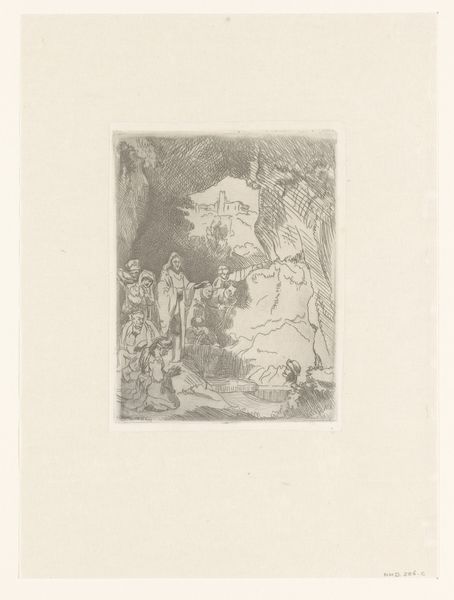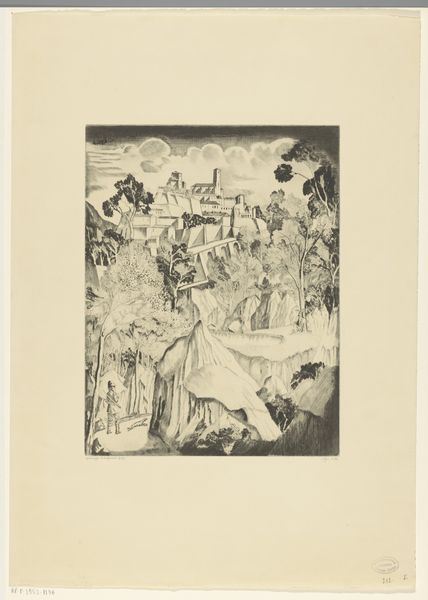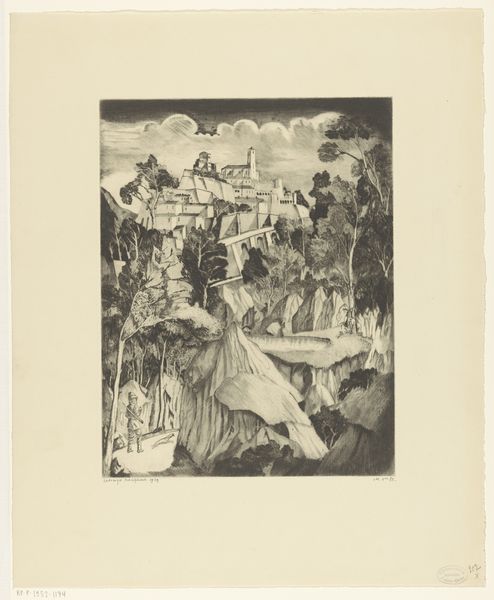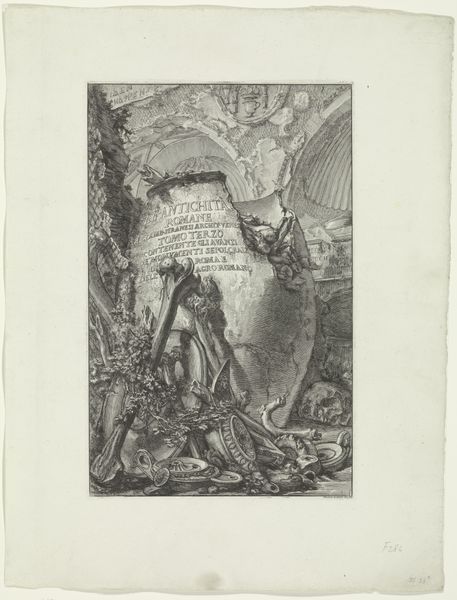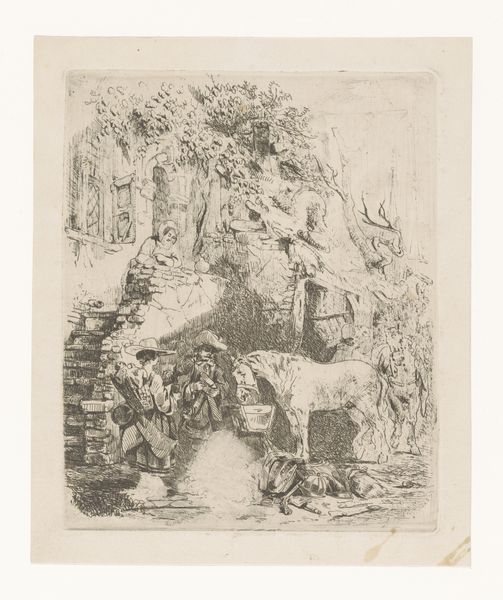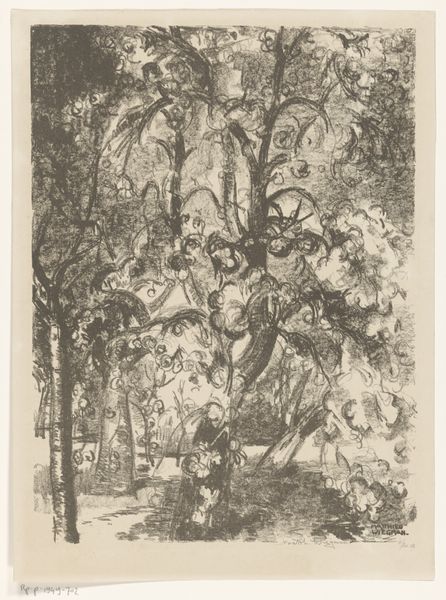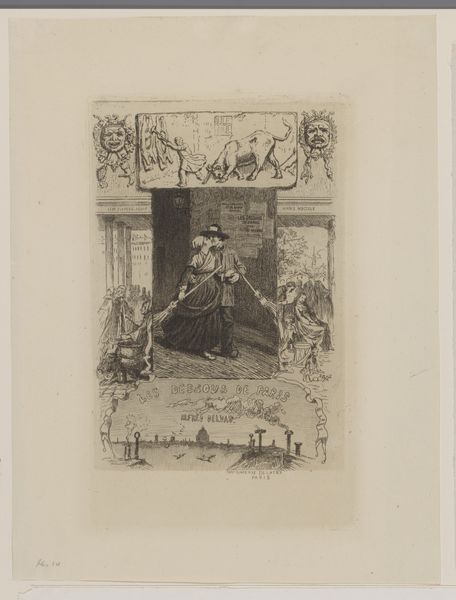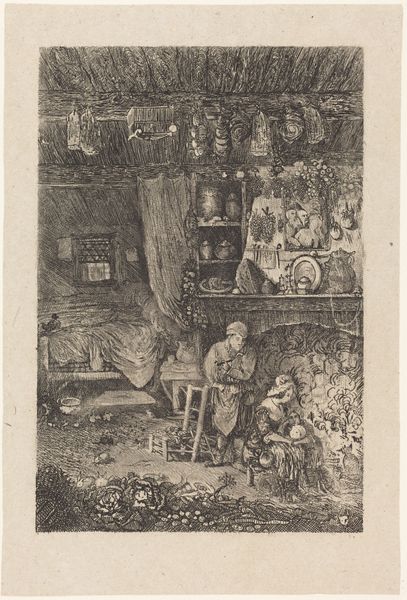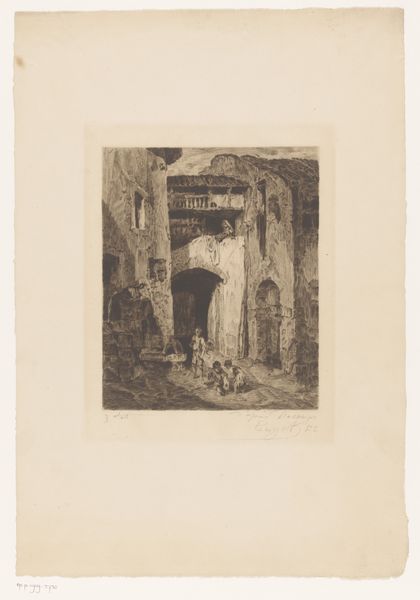
graphic-art, print, etching
graphic-art
narrative-art
etching
landscape
linocut print
expressionism
cityscape
realism
Dimensions: height 418 mm, width 370 mm
Copyright: Rijks Museum: Open Domain
Curator: This etching, created by Jules de Bruycker in 1928, is titled "Volksfeesten in Brussel," or "Public Celebrations in Brussels." Editor: It's absolutely teeming with people. Chaotic, but also there's a palpable energy, like a tightly wound spring about to release. Is it me, or are there a lot of sharp, jutting angles adding to that tension? Curator: The city, here, is more than just background, wouldn't you say? Consider the architectural detail – how buildings act as silent witnesses, embodying collective memories of both celebration and possibly turmoil. I’m curious, do the specific visual motifs feel rooted in recognisable local history? Editor: What really draws my eye is how the crowd seems to become a literal sea of hands and faces; it seems the artist wanted to point at how such celebrations unite the whole working class, or how, more broadly, a singular material mass emerges from a large social event like this one. It also makes me wonder what kind of printing plates De Bruycker used, given the clear density and the precision needed for it! Curator: Indeed. And note the strategic use of shadow – areas of near-total darkness juxtaposed against areas of almost frenetic detail. Consider, too, how flags and banners ripple throughout, objects of power, reflecting the ideologies—perhaps competing ones—that are enacted during these communal events. Do we, as viewers, passively observe this festival, or are we implicitly invited to participate, perhaps even challenged by its spectacle? Editor: Challenged is the word, given that the artist pushed etching to this near fever-pitch of detail! Was he commenting on some local socioeconomic reality? I see now there seem to be different types of figures mixed in the foreground—elites and more "common" people. Curator: Brussels, as with most cities, holds within it complex layers of social strata. It's feasible De Bruycker sought to reflect this intermingling—or perhaps even point at tensions that bubble beneath the surface even amidst festivities. But these festivals often are not only about the present moment, it's often a re-enactment of the past and a foreshadowing for what could come. Editor: That's so well-observed, that almost sculptural approach to social dynamics. Well, I feel I’ve gained new perspectives by considering materiality, process, and these underlying social conditions present within “Volksfeesten in Brussel.” Curator: As have I. Looking closer allows me to perceive that sometimes what seems chaotic holds a certain intentional composition to reveal deeper collective meanings and cultural echoes.
Comments
No comments
Be the first to comment and join the conversation on the ultimate creative platform.
